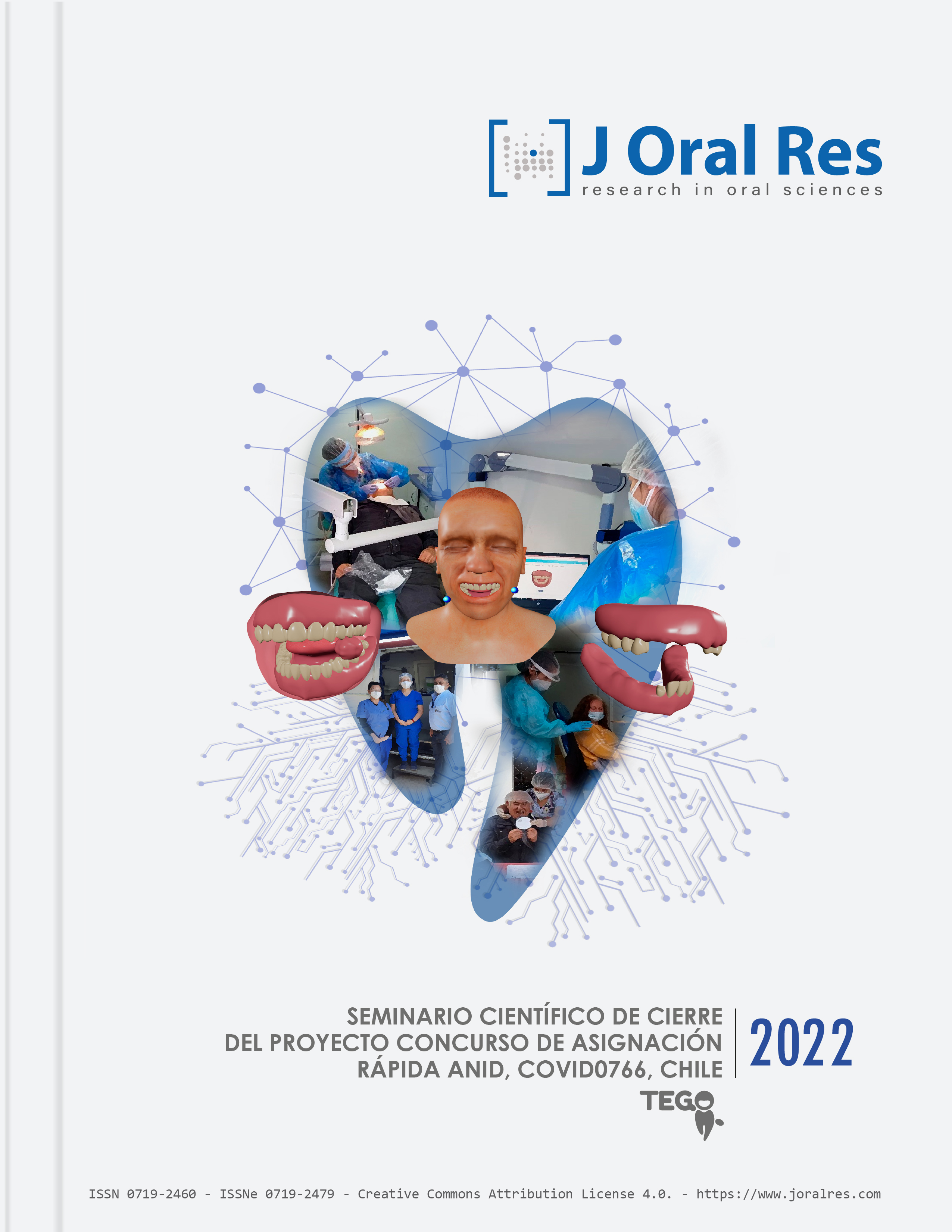Analysis of clinical indicators of teledentistry management for the elderly population during the covid-19 pandemic in chile.
Abstract
Objective: To analyze clinical indicators of teledentistry management for the elderly population during the COVID-19 pandemic in Chile. Material and Methods: A pilot teledentistry project was developed for dental care of the elderly in 5 regions of Chile. The data obtained were recorded on the TEGO Platform to be subsequently selected and analyzed by the researchers in terms of clinical management indicators: degree of installed occupancy, degree of available occupation, degree of real occupation, interconsultation indicator per patient attended, urgencies according to reason for consultations, unpostponable prosthetic treatment according to reason for consultations, prevention in relation to granted benefits, prevention in relation to the patients cared for, and project absenteeism indicator. Results: The clinical management indicators obtained were as follows: The average degree of installed occupancy was 67%. The average degree of available occupancy was 78%, which accounts for the clinical time in which there are dental chairs and dentists willing to work. The average real occupancy degree was 86%. The average interconsultation indicator per patient observed was 25%. The indicator of urgencies according to the reason for the consultation was 95%, which indicates that the purpose of the study was fulfilled. The average unpostponable prosthetic treatment according to the reason for consultations was 5%. The prevention in relation to granted benefits reached 39%. Finally, the average indicator of absenteeism was 17%. Conclusion: The measurement of clinical management indicators contributes to meet the Chilean Ministry of Health Explicit Health Guarantees (GES), which are: Access, Timely Attention, Quality and Financial Protection.
References
[2]. Gobierno Digital, Ministerio Secretaría General de la Presidencia, Ministerio del Interior y Ministerio de Ciencia, Tecnología, Conocimiento e Innovación, Cifras Oficiales COVID-19. April, 2020. June 26, 2021. https://www.gob.cl/coronavirus/cifrasoficiales/
[3]. Rocca MA, Kudryk VL, Pajak JC, Morris T. The evolution of a teledentistry system within the Department of Defense. Proc AMIA Symp. 1999:921-4. PMID: 10566495; PMCID: PMC2232632.
[4]. Estai M, Kanagasingam Y, Tennant M, Bunt S. A systematic review of the research evidence for the benefits of teledentistry. J Telemed Telecare. 2018 Apr;24(3):147-156. doi: 10.1177/1357633X16689433. Epub 2017 Jan 24. PMID: 28118778.
[5]. Armijos JC, Núñez Mondaca A. Indicadores de gestión para evaluar el desempeño de hospitales públicos: Un caso de estudio en Chile y Ecuador [Assessing the performance of public hospitals using key indicators: a case study in Chile and Ecuador]. Rev Med Chil. 2020 May;148(5):626-643. Spanish. doi: 10.4067/S0034-98872020000500626. PMID: 33399756.
[6]. Irving M, Stewart R, Spallek H, Blinkhorn A. Using teledentistry in clinical practice as an enabler to improve access to clinical care: A qualitative systematic review. J Telemed Telecare. 2018 Apr;24(3):129-146. doi: 10.1177/1357633X16686776. Epub 2017 Jan 16. PMID: 28092220.
[7]. Fuentes R, Zaror C, Huanquilef M. Legislación y Normas Atingentes a la Atención Odontológica y el COVID-19. Una Perspectiva Desde las Clínicas Universitarias. Int J Odontostomatol. 2020;14(4):481–8.
This is an open-access article distributed under the terms of the Creative Commons Attribution License (CC BY 4.0). The use, distribution or reproduction in other forums is permitted, provided the original author(s) and the copyright owner(s) are credited and that the original publication in this journal is cited, in accordance with accepted academic practice. No use, distribution or reproduction is permitted which does not comply with these terms. © 2024.











